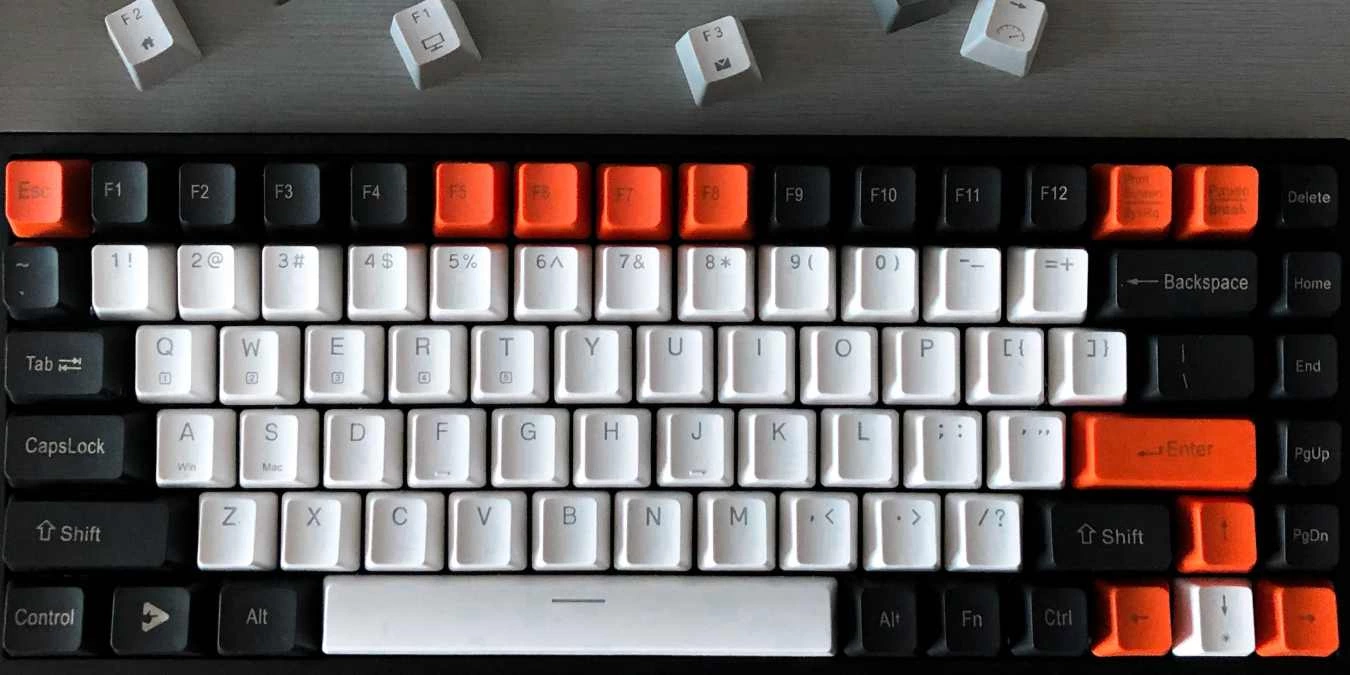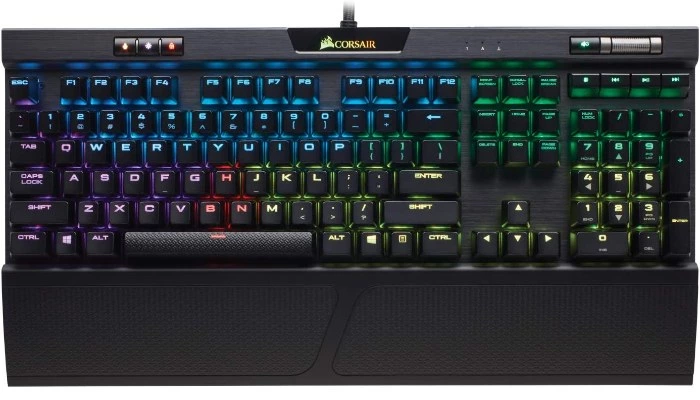Table of Contents
- Why Keyboard Shortcuts Matter
- Quick Reference Table
- Essential Everyday Shortcuts
- Navigation Power Moves
- Advanced Productivity Shortcuts
- Category-Specific Shortcuts
- Creating Your Own Shortcuts
- Practice Makes Perfect
- Common Mistakes to Avoid
- Troubleshooting Shortcut Issues
- Watch and Learn
- Accessibility Considerations
- FAQ — Frequently Asked Questions
- Conclusion
Mastering keyboard shortcuts transforms your computing experience. Research shows that power users save up to 8 days per year by eliminating repetitive mouse movements. Whether you’re working with Windows 10 or recently upgraded to Windows 11, these 20 essential hotkeys will dramatically boost your productivity.
Why Keyboard Shortcuts Matter
Every second counts in today’s fast-paced digital environment. Moving your hand from keyboard to mouse and back costs approximately 2 seconds per action. Multiply that by hundreds of daily operations, and you’re losing precious minutes each day.
Benefits of using keyboard shortcuts:
- Reduce strain on your wrist and fingers
- Maintain focus without visual distractions
- Complete tasks up to 50% faster
- Look professional during presentations
- Minimize repetitive stress injuries
Quick Reference Table
| Shortcut | Function | Works In |
|---|---|---|
| Ctrl+Z | Undo last action | All programs |
| Ctrl+W | Close current window/tab | Browsers, File Explorer |
| Ctrl+A | Select everything | Documents, folders |
| Alt+Tab | Switch between apps | System-wide |
| Alt+F4 | Close active application | System-wide |
| Win+D | Show desktop | System-wide |
| Win+Arrow Keys | Snap windows | System-wide |
| Win+Tab | Open Task View | System-wide |
| Win+L | Lock computer | System-wide |
| Win+I | Open Settings | System-wide |
| F2 | Rename file/Edit cell | File Explorer, Excel |
| F5 | Refresh page | Browsers, File Explorer |
| Win+S | Open Search | System-wide |
| Win+PrtScn | Save screenshot | System-wide |
| Ctrl+Shift+Esc | Open Task Manager | System-wide |
| Win+C | Teams chat/Cortana | Windows 11/10 |
| Win+Ctrl+D | New virtual desktop | System-wide |
| Win+X | Power user menu | System-wide |
Essential Everyday Shortcuts
1. Ctrl+Z — Your Digital Time Machine
This universal undo command rescues you from mistakes instantly. Accidentally deleted text in Microsoft Word? Removed the wrong file? Hit Ctrl+Z and breathe easy. Most applications support multiple levels of undo, allowing you to step back through several actions.
Pro tip: Use Ctrl+Y to redo an action you’ve undone.
2. Ctrl+W — Lightning-Fast Window Closing
Stop moving your cursor to that tiny X button. Ctrl+W closes your current browser tab, File Explorer window, or document in seconds. This shortcut keeps your workflow smooth and eliminates unnecessary mouse movement.
3. Ctrl+A — Select Everything Instantly
Need to highlight an entire document? Want to select all files in a folder? Ctrl+A accomplishes this in one keystroke. Combined with Ctrl+C (copy) and Ctrl+V (paste), you’ve got a powerful trio for managing content.
4. Alt+Tab — The Classic App Switcher
This legendary shortcut displays all open applications, letting you cycle through them effortlessly. Hold Alt and tap Tab repeatedly until you reach your desired program. Release both keys to switch.
Advanced technique: Add Shift to reverse direction (Alt+Shift+Tab).
5. Alt+F4 — Close Applications Safely
Unlike force-closing through Task Manager, Alt+F4 gracefully shuts down your active application. The program will prompt you to save any unsaved work, preventing accidental data loss.
Navigation Power Moves
6. Win+D — Instant Desktop Access
Access your desktop files without minimizing windows individually. Press Win+D once to hide everything, press again to restore all windows. Perfect for quickly grabbing a desktop file during presentations.
7. Win+Left/Right Arrow — Professional Window Management
Snap windows to screen edges for side-by-side comparison. Press Win+Left Arrow to dock a window on the left half, Win+Right Arrow for the right half. This feature revolutionizes multitasking.
Windows 11 enhancement: Use Win+Z to access Snap Layouts for more complex arrangements.
8. Win+Tab — Modern Task Switching
Unlike Alt+Tab, this shortcut opens an elegant Task View showing thumbnail previews of all running programs. You can also see and switch between virtual desktops from this interface.
9. Tab and Shift+Tab — Navigate Dialog Boxes
Move through buttons, checkboxes, and fields in dialog boxes without touching your mouse. Tab moves forward, Shift+Tab moves backward. Add Ctrl to jump between tabs in multi-tabbed dialog boxes.
10. Ctrl+Esc — Open Start Menu (Alternative)
Don’t have a Windows key? No problem. Ctrl+Esc opens the Start menu just like pressing the Win key. Navigate using arrow keys and Enter to launch applications.
Advanced Productivity Shortcuts
11. F2 — Rename Files Instantly
Select any file and press F2 to rename it immediately. This also enables cell editing in Excel and inline text editing in various applications. One of the most underutilized yet powerful shortcuts.
12. F5 — Refresh Everything
Update your current view with the latest information. Essential for:
- Refreshing web pages in browsers
- Updating folder contents in File Explorer
- Reloading data in applications
- Checking for new files or changes
13. Win+L — Secure Your Workspace
Stepping away from your computer? Win+L locks your screen instantly, requiring password entry to regain access. This crucial security shortcut protects your data in shared environments.
Security tip: Enable automatic locking after inactivity in Settings > Accounts > Sign-in options.
14. Win+I — Quick Access to Settings
Jump directly to Windows Settings without navigating through menus. From here, configure system preferences, update drivers, manage accounts, and customize your operating system.
Windows 11 exclusive: Press Win+A for Quick Settings panel with frequently used toggles.
15. Win+S — Powerful System Search
Activate Windows Search to find files, launch applications, or search the web. Simply press Win+S, type your query, and hit Enter. This eliminates menu diving and desktop clutter.
Search tips:
- Type app names for instant launch
- Search settings by keyword
- Find documents by content
- Use filters like “kind:document” or “modified:today”
16. Win+PrtScn — Screenshot Mastery
Capture your entire screen and automatically save it as a PNG file. Windows stores these screenshots in Pictures > Screenshots folder and copies them to your clipboard simultaneously.
Variations:
- Alt+PrtScn: Capture only the active window (clipboard only)
- Win+Shift+S: Open Snipping Tool for custom area selection
- Win+Alt+PrtScn: Record gameplay clips (Game Bar)
17. Ctrl+Shift+Esc — Direct Task Manager Access
Bypass the security screen and open Task Manager immediately. Monitor system performance, force-close frozen applications, manage startup programs, and view detailed resource usage.
What you can do:
- End unresponsive programs
- Check CPU, memory, and disk usage
- Disable startup applications
- Monitor network activity
- View detailed process information
18. Win+C — Communication Hub
This shortcut changed between Windows versions:
Windows 11: Opens Microsoft Teams chat for quick messaging and collaboration.
Windows 10: Activates Cortana voice assistant (if enabled in settings).
19. Win+Ctrl+D — Create Virtual Desktops
Organize your workspace across multiple virtual desktops. Each desktop maintains its own set of open windows, reducing clutter and improving focus.
Virtual desktop management:
- Win+Ctrl+D: Create new virtual desktop
- Win+Ctrl+Left/Right Arrow: Switch between desktops
- Win+Ctrl+F4: Close current virtual desktop
- Win+Tab: View all desktops and move windows between them
Use cases:
- Separate work and personal applications
- Dedicate one desktop to communication tools
- Keep reference materials on a secondary desktop
- Organize projects by client or task
20. Win+X — The Hidden Power Menu
Access the Quick Link menu containing essential system tools. This hidden gem provides shortcuts to:
- Device Manager
- Disk Management
- Event Viewer
- PowerShell/Command Prompt
- Task Manager
- Settings
- File Explorer
- Network Connections
- System properties
Perfect for system administrators and power users who need quick access to advanced configuration tools.
Category-Specific Shortcuts
File Management
- Ctrl+Shift+N: Create new folder
- Alt+Up Arrow: Navigate to parent folder
- Alt+Left/Right Arrow: Navigate forward/backward through folder history
- Shift+Delete: Permanently delete (skip Recycle Bin)
Text Editing
- Ctrl+Backspace: Delete entire word
- Ctrl+Left/Right Arrow: Jump between words
- Shift+Arrow Keys: Select text character by character
- Ctrl+Shift+Arrow Keys: Select text word by word
Browser Shortcuts
- Ctrl+T: Open new tab
- Ctrl+Shift+T: Reopen closed tab
- Ctrl+Tab: Switch between tabs
- Ctrl+L: Select address bar
Creating Your Own Shortcuts
Windows allows custom keyboard shortcuts for desktop shortcuts:
- Right-click any desktop shortcut
- Select “Properties”
- Click in the “Shortcut key” field
- Press your desired key combination
- Click “Apply” and “OK”
Recommendations: Use Ctrl+Alt+[Letter] combinations to avoid conflicts with existing shortcuts.
Practice Makes Perfect
Master these shortcuts through deliberate practice:
Week 1: Focus on basic shortcuts (Ctrl+Z, Ctrl+C, Ctrl+V, Alt+Tab) Week 2: Add navigation shortcuts (Win+D, Win+Arrow Keys, Win+Tab) Week 3: Practice advanced shortcuts (Win+L, Win+I, Ctrl+Shift+Esc) Week 4: Incorporate specialized shortcuts into daily workflow
Training Tips
- Print a cheat sheet and keep it visible
- Set reminders to use specific shortcuts
- Challenge yourself to complete tasks mouse-free
- Teach shortcuts to colleagues to reinforce learning
- Use typing tutorial software focused on shortcuts
Common Mistakes to Avoid
❌ Using mouse out of habit: Force yourself to pause and recall the shortcut ❌ Trying to memorize everything at once: Focus on 3-5 shortcuts per week ❌ Giving up after failed attempts: Muscle memory takes 3-4 weeks to develop ❌ Ignoring program-specific shortcuts: Many applications have unique hotkeys ❌ Not customizing shortcuts: Personalize combinations for maximum efficiency
Troubleshooting Shortcut Issues
If shortcuts aren’t working:
- Check for conflicting software: Some applications override default Windows shortcuts
- Verify keyboard functionality: Test keys in Notepad to ensure hardware works
- Review Filter Keys settings: Win+I > Accessibility > Keyboard
- Update keyboard drivers: Device Manager > Keyboards > Update driver
- Restart Explorer.exe: Ctrl+Shift+Esc > Windows Explorer > Restart
Watch and Learn
For visual learners, these video resources demonstrate keyboard shortcuts in action:
- Microsoft Official Keyboard Shortcuts Tutorial: Comprehensive guide covering Windows 11 features
- Productivity Channel How-To Videos: Real-world applications and workflow optimization
- Tech Tutorial Channels: Step-by-step breakdowns with practice exercises
Search YouTube for “Windows keyboard shortcuts tutorial” to find current, highly-rated demonstrations.
Accessibility Considerations
Keyboard shortcuts benefit users with mobility challenges. Additional accessibility shortcuts:
- Win+U: Open Accessibility settings
- Win+Plus/Minus: Activate Magnifier (zoom in/out)
- Win+Enter: Open Narrator screen reader
- Win+Ctrl+Enter: Toggle Narrator
- Alt+Shift+PrtScn: Toggle High Contrast
FAQ — Frequently Asked Questions
How long does it take to memorize keyboard shortcuts?
Most users develop muscle memory for 10-15 shortcuts within 3-4 weeks of consistent practice. Start with 3-5 essential shortcuts and gradually expand your repertoire. Daily use accelerates learning significantly.
Do keyboard shortcuts work the same in Windows 10 and Windows 11?
Most shortcuts remain identical between versions. Key differences include Win+C (Teams in Win11, Cortana in Win10) and Win+A (Quick Settings in Win11, Action Center in Win10). Win+Z for Snap Layouts is exclusive to Windows 11.
Can I customize existing Windows shortcuts?
System-wide Windows shortcuts cannot be modified directly. However, you can create custom shortcuts for desktop applications through Properties > Shortcut key. Many programs also allow remapping shortcuts in their settings.
What should I do if a shortcut stops working?
First, check for conflicting software that might override the shortcut. Restart Windows Explorer through Task Manager (Ctrl+Shift+Esc > Windows Explorer > Restart). Update keyboard drivers if the issue persists. Some gaming software and custom keyboard utilities can interfere with default shortcuts.
Are keyboard shortcuts faster than using a mouse?
Yes, studies show keyboard shortcuts reduce task completion time by 30-50% compared to mouse navigation. They eliminate the time spent moving your hand between keyboard and mouse, positioning the cursor, and clicking multiple times.
Will using shortcuts reduce repetitive strain injury?
Keyboard shortcuts significantly reduce wrist and hand movement, decreasing the risk of repetitive strain injuries. They minimize the repetitive clicking and cursor positioning that contribute to conditions like carpal tunnel syndrome.
How do I remember which shortcuts to use for different tasks?
Group shortcuts by function: editing (Ctrl+Z, Ctrl+C, Ctrl+V), navigation (Alt+Tab, Win+D), and system (Win+L, Win+I). Create a printed cheat sheet for your desk. Practice one category per week until shortcuts become automatic.
Can I use keyboard shortcuts on a laptop without a Windows key?
Yes, use Ctrl+Esc as an alternative to the Windows key for opening the Start menu. Most modern laptops include a Windows key, but older models or compact keyboards may require this workaround.
Do shortcuts work in all applications?
Universal shortcuts like Ctrl+Z, Ctrl+C, Ctrl+V, and Alt+F4 work in almost all Windows applications. System shortcuts (Win+L, Win+D) work regardless of the active program. Application-specific shortcuts vary by software.
How can I teach keyboard shortcuts to my team?
Start with a lunch-and-learn session demonstrating the top 10 shortcuts. Distribute printed reference cards. Create a weekly “shortcut of the week” email. Encourage peer teaching and celebrate when team members use shortcuts during screen shares.
What’s the difference between Alt+Tab and Win+Tab?
Alt+Tab provides quick cycling between open applications with minimal visual interface. Win+Tab opens Task View with thumbnail previews of all windows and virtual desktops, offering more visual context and desktop management options.
Can keyboard shortcuts damage my keyboard?
No, using keyboard shortcuts will not damage your keyboard. Modern keyboards are designed to handle millions of keystrokes. Shortcuts actually reduce overall keyboard wear by decreasing the number of keystrokes needed to complete tasks.
Are there shortcuts for shutting down Windows?
Press Win+X, then U, then U again for shutdown. Alternatively, press Alt+F4 from the desktop to open the shutdown dialog. Win+L locks your computer without shutting down.
How do I disable a Windows shortcut I accidentally trigger?
Most Windows shortcuts cannot be disabled individually. You can disable the Windows key entirely through Registry Editor, but this affects all Win+ shortcuts. Third-party tools like AutoHotkey allow more granular control over shortcut behavior.
What are the most important shortcuts for beginners?
Start with these five: Ctrl+Z (undo), Ctrl+C and Ctrl+V (copy/paste), Alt+Tab (switch apps), and Win+D (show desktop). These provide immediate productivity benefits and form the foundation for learning more advanced shortcuts.
Conclusion: Your Path to Mouse-Free Mastery
Keyboard shortcuts represent more than time-saving tricks—they fundamentally transform how you interact with your computer. Start with five shortcuts this week, gradually expanding your repertoire. Within a month, you’ll navigate Windows with unprecedented speed and precision.
The investment in learning these 20 essential shortcuts pays dividends daily. Your productivity will soar, your workflow will smooth out, and you’ll wonder how you ever managed without them.
Your Next Steps:
- Bookmark this guide for reference
- Choose 3-5 shortcuts to practice today
- Set a calendar reminder to review weekly
- Track your progress and add new shortcuts monthly
- Share your favorite shortcuts with colleagues
Remember: every expert was once a beginner. Start small, practice consistently, and watch your efficiency multiply. Your mouse will thank you for the break.
Key Takeaways
📌 Keyboard shortcuts save up to 8 days per year by eliminating repetitive mouse movements and reducing task completion time by 30-50%
📌 Start small with 5 core shortcuts: Ctrl+Z (undo), Ctrl+C/V (copy/paste), Alt+Tab (switch apps), Win+D (show desktop) — master these before expanding
📌 Security essential: Win+L locks your computer instantly when stepping away, protecting sensitive data in seconds
📌 Window management made easy: Win+Arrow Keys snap windows to screen edges for perfect side-by-side multitasking
📌 Task Manager shortcut Ctrl+Shift+Esc provides direct access to system monitoring and force-closing frozen applications
📌 Virtual desktops (Win+Ctrl+D) create separate workspaces for different projects, dramatically improving organization and focus
📌 Muscle memory develops in 3-4 weeks with consistent daily practice — patience and repetition are key to mastery
📌 Hidden power menu Win+X gives instant access to Device Manager, PowerShell, and other advanced system tools
📌 Screenshots simplified: Win+PrtScn captures and auto-saves your entire screen, while Win+Shift+S lets you select custom areas
📌 Reduce strain and injuries by minimizing repetitive mouse movements — shortcuts are ergonomically beneficial for long-term health
Boost Your Productivity Beyond Shortcuts
While mastering keyboard shortcuts dramatically improves your daily efficiency, your overall system performance depends on proper configuration and security. Slow computers, outdated systems, or security vulnerabilities can negate all the time you save with shortcuts.
Need professional help optimizing your Windows system? Downtown Computer Services specializes in comprehensive computer solutions that keep your workflow running smoothly and securely.
Our expert team can help you:
- Optimize Windows performance for maximum speed
- Implement robust security measures to protect your data
- Configure custom shortcuts and automation tools
- Resolve technical issues slowing down your productivity
- Set up efficient multi-monitor workstations
Ready to take your productivity to the next level? Contact Downtown Computer Services at (954) 287-3894 for a consultation. Whether you need professional IT support or system optimization in Fort Lauderdale, our experienced technicians will create solutions tailored to your specific workflow needs.
Don’t let technical issues slow you down — invest in professional support and work smarter, not harder.


